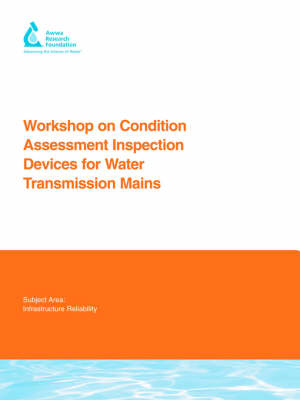Water Research Foundation Report
2 total works
Potential Techniques for the Assessment of Joints in Water Distribution Pipelines
by Chris Reed, Alastair Robinson, and David Smart
Published 31 May 2007
The failures from gradually deteriorating joints are observed as leaks or pipe breaks at or near the joint and may result in water quality deterioration. However, while these failures are not often catastrophic, they frequently remain undetected or are not acted upon. If the condition of a joint can be assessed prior to the onset of visible deterioration, it may be possible to undertake planned remedial action to prevent further degradation and expense.
The project sought to identify and document the key problems associated with the failure of joints in water distribution pipelines and to investigate and report on the potential of existing and emerging techniques for the location, condition assessment, and repair of these joints. The research approach acknowledged that location, condition assessment, and rehabilitation of pipe joints were likely to be achieved using a variety of different techniques and consisting of the following stages:
The project sought to identify and document the key problems associated with the failure of joints in water distribution pipelines and to investigate and report on the potential of existing and emerging techniques for the location, condition assessment, and repair of these joints. The research approach acknowledged that location, condition assessment, and rehabilitation of pipe joints were likely to be achieved using a variety of different techniques and consisting of the following stages:
- Determine the types of joints that are most common and their major potential modes of failure
- Perform a utility survey to determine methods currently being used for joint location, condition assessment, and repair
- Undertake a literature and manufacturer search of current and emerging technologies used for location, condition assessment, repair, and rehabilitation of pipe joints
- Investigate and report on the performance of selected technologies
- Perform utility sponsored field testing of selected techniques under a variety of realistic site conditions
- Develop decision support tools and methodologies based upon the technical attributes of the particular systems
Workshop on Condition Assessment Inspection Devices for Water Transmission Mains
by K. Lillie, Chris Reed, M. Rodgers, S. Daniels, and David Smart
Published 31 May 2005
Many water utilities have only a limited knowledge of the structural condition of their underground assests. In order to maintain optimum serviceability, it is increasingly important that utilities gain a better understanding of the current condition and performance of these buried assets. Regular inspection and condition assessment of pipelines can greatly assist utilities with developing robust and cost-effective operational maintenance programs, which will optimize capital expenditure whilst minimizing risk. The aim of the project was to conduct a state-of-the-art literature review of non-interruptive condition assessment inspection devices for large diameter transmission mains (greater than 12 inches). In addition, an expert panel workshop was to be held to review business needs and drivers, the performance of existing technologies, and future underground asset condition assessment research needs. Originally published by AwwaRF for its subscribers in 2004.

